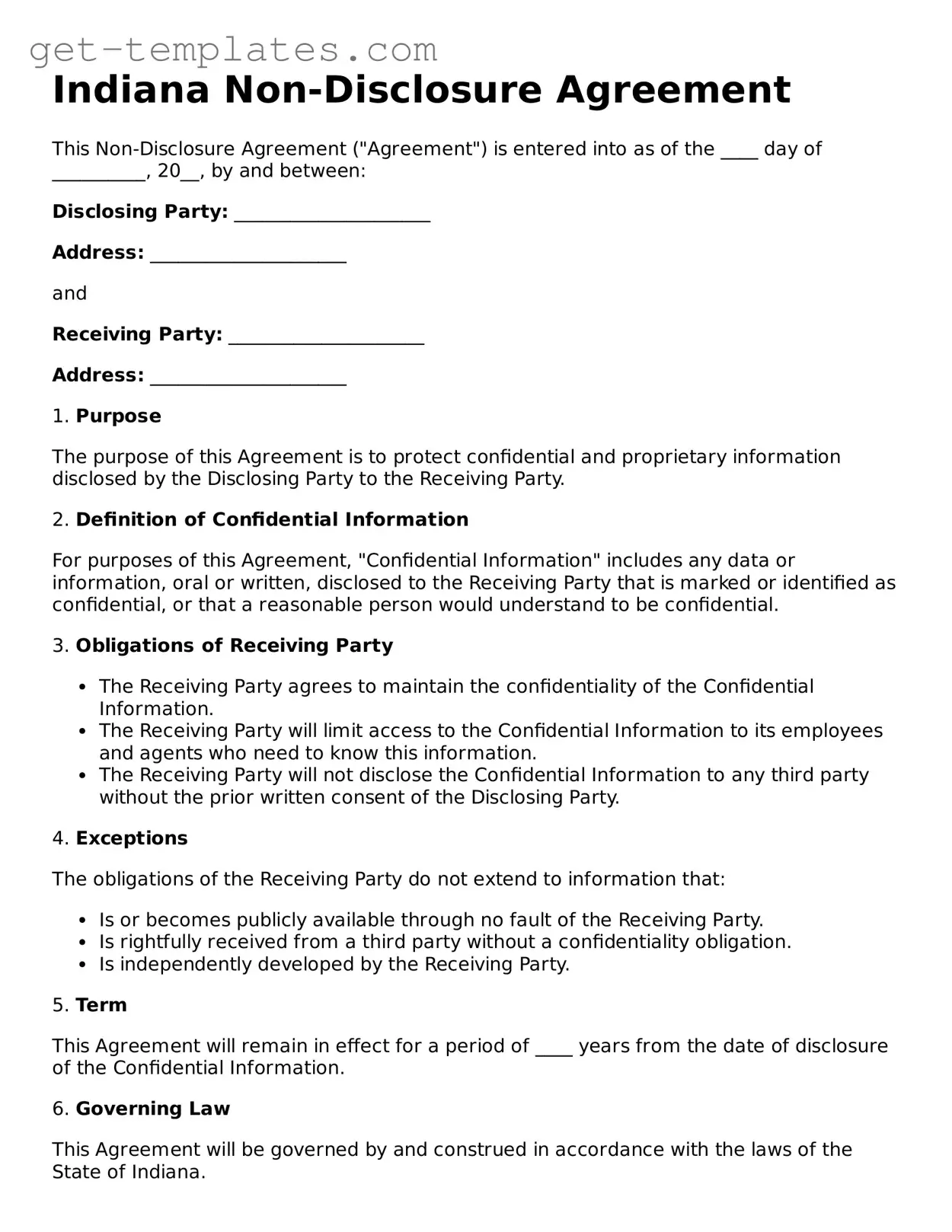Indiana Non-Disclosure Agreement
This Non-Disclosure Agreement ("Agreement") is entered into as of the ____ day of __________, 20__, by and between:
Disclosing Party: _____________________
Address: _____________________
and
Receiving Party: _____________________
Address: _____________________
1. Purpose
The purpose of this Agreement is to protect confidential and proprietary information disclosed by the Disclosing Party to the Receiving Party.
2. Definition of Confidential Information
For purposes of this Agreement, "Confidential Information" includes any data or information, oral or written, disclosed to the Receiving Party that is marked or identified as confidential, or that a reasonable person would understand to be confidential.
3. Obligations of Receiving Party
- The Receiving Party agrees to maintain the confidentiality of the Confidential Information.
- The Receiving Party will limit access to the Confidential Information to its employees and agents who need to know this information.
- The Receiving Party will not disclose the Confidential Information to any third party without the prior written consent of the Disclosing Party.
4. Exceptions
The obligations of the Receiving Party do not extend to information that:
- Is or becomes publicly available through no fault of the Receiving Party.
- Is rightfully received from a third party without a confidentiality obligation.
- Is independently developed by the Receiving Party.
5. Term
This Agreement will remain in effect for a period of ____ years from the date of disclosure of the Confidential Information.
6. Governing Law
This Agreement will be governed by and construed in accordance with the laws of the State of Indiana.
7. Amendments
This Agreement may only be amended in writing signed by both parties.
In witness whereof, the parties have executed this Non-Disclosure Agreement as of the date first above written.
Disclosing Party Signature: _____________________
Date: _____________________
Receiving Party Signature: _____________________
Date: _____________________
